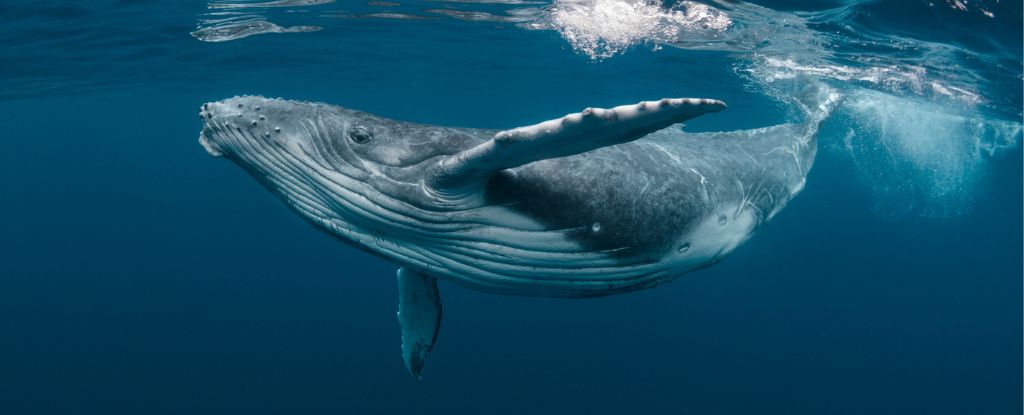Humpback Whales Nearly 9,000 Miles Away Have Been Caught Singing the Same Song: ScienceAlert
According to new research, humpback whales across the South Pacific Ocean are connected to each other through shared song.
From the east coast of Australia to French Polynesia to the breeding grounds off Ecuador – a total distance of more than 14,000 kilometers (8,700 miles) – researchers have heard humpback whales (Megaptera novaeangliae) exchanging the same viral hits.
Male humpback whales are known to sing mating songs “as complex as jazz” during breeding season, and each population has a slightly different chorus of vocalizations that they string together in unique ways.
These multiple repeating phrases are called “themes”, and each whale song has several of them.
Yet, from time to time, a breeding population will undergo a song “revolution”, whereby all the themes sung by the males will be replaced by new ones.
It’s unclear why they do this, but previous studies have shown that these subtle tweaks can turn into resounding successes.
Around the turn of the century, populations of humpback whales off the west coast of Australia were found to share themes with populations on the east coast.
Then, years later, breeding populations near French Polynesia were caught singing the same song themes that began on the east coast of Australia, some 6,000 kilometers (3,730 miles) away.
Now, it seems, the songs can spread even further. Researchers have shown that whale songs in French Polynesia can migrate across the Pacific Ocean to South America, a further 8,000 kilometers (4,970 miles) to the east.
In three years, from 2016 to 2018, the team was able to map a gradual songwriting revolution heard first in French Polynesia and then off South America a few years later.
“This study demonstrates that songs first identified in Western populations can be transmitted throughout the South Pacific, supporting the potential for a circumpolar cultural transmission of song in the Southern Hemisphere and a vocal culture that n ‘is equal to ours,’ write the researchers.
It is unclear at this stage whether whale songs can migrate across the Indian Ocean back to the Australian coast.
But according to The New York Timespreliminary results off the coasts of Brazil and South Africa suggest that a full orbit of the planet may in fact be possible.
By the time a whale song returns to the original breeding population, however, it is likely to have evolved beyond recognition. With a circumnavigation of the planet, it’s possible the whales are essentially establishing a whole new track.
“The study of humpback whale song culture not only draws parallels with characteristics of songbird song, but also sheds light on the underlying mechanisms of social learning and cultural evolution in whales. animals, ranging from fish to other cetacean species to humans,” the authors write.
At this time, experts can’t be sure how these songs are shared between neighboring whale populations, but they have one main hypothesis.
Although we don’t really know where French Polynesian humpback whales usually spend their summer months foraging, if they feed in a location similar to Ecuador’s whale populations, it’s possible that they share airs while inflating or migrating across the Pacific.
Turns out, male whales don’t just sing during their winter breeding season. There is plenty of evidence to suggest that they also practice during the summer. And these tunes can be catchy enough to attract the attention of another population.
If so, researchers believe that whale songs may spread across the world in a gradual way. First, a singing revolution begins in one population, then, in the summer, this population migrates to forage, passing it on to a neighboring population. And so on.
The researchers hypothesize that the eastward trend is due to differences in population size, with songs moving from larger to smaller groups.
To test this theory, it would be interesting to see if songs created in large Western Australian populations also move in the other direction.
Since the late 1990s, researchers in and around Australia have gathered evidence indicating that whale songs can morph and migrate within and between populations.
It took decades, but now scientists are listening around the world.
It won’t be long before we know how far bump songs can travel.
The study was published in Royal Society Open Science.


Comments are closed.